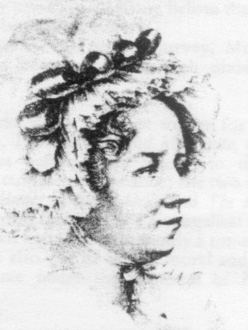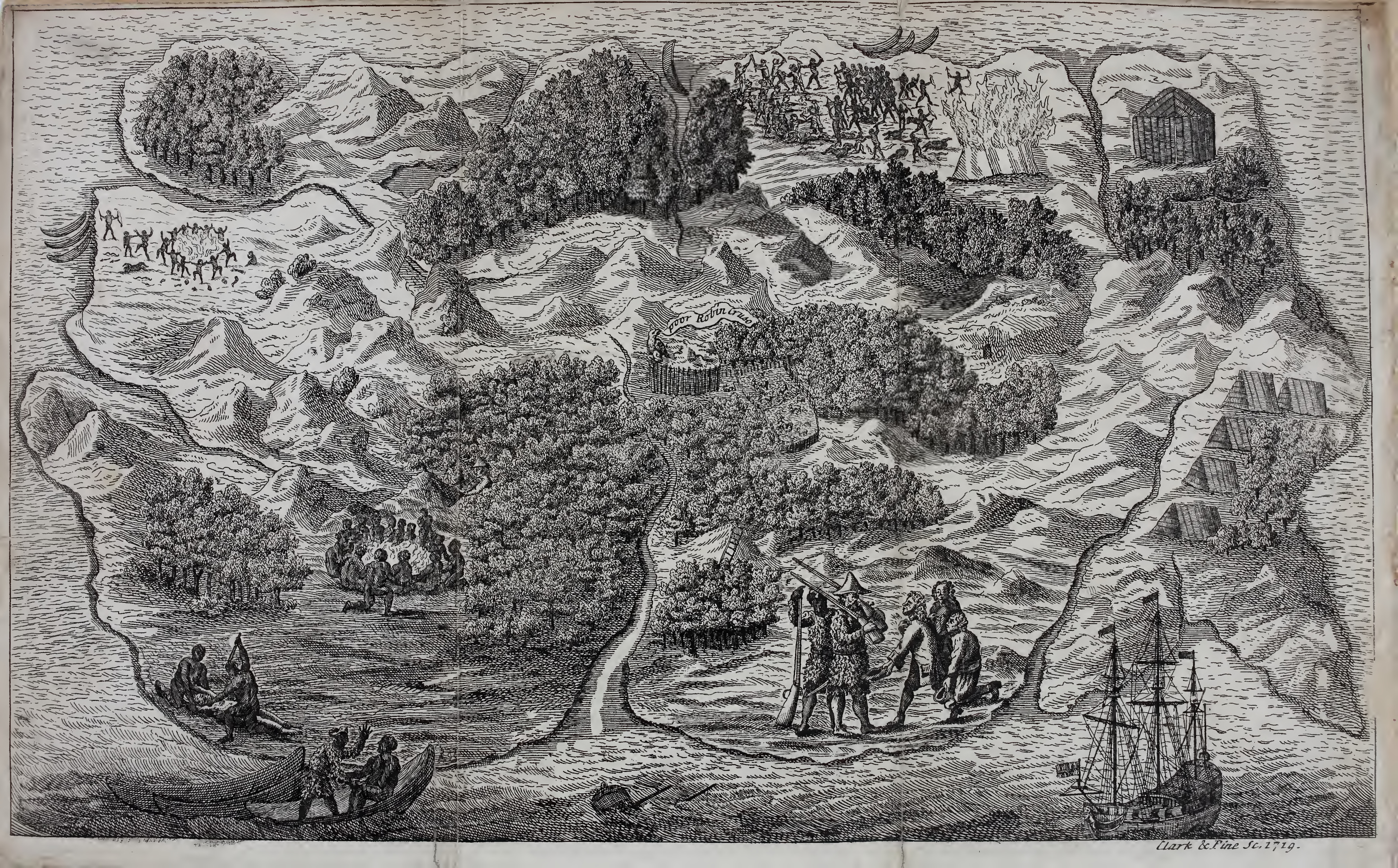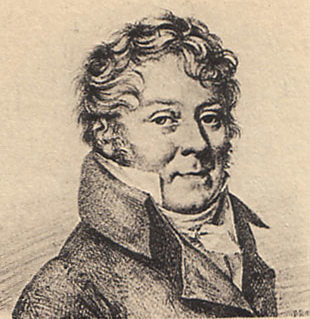|
Antoine Banier
The abbé Antoine Banier (2 November 1673 – 2 November 1741), a French clergyman and member of the ''Académie des Inscriptions et Belles-Lettres'' from 1713, was a historian and translator, whose rationalizing interpretation of Greek mythology was widely accepted until the mid-nineteenth century. Early life and education Banier, born at Dallet in Auvergne and educated at the Jesuit college at Clermont, arrived in Paris as a young man and held a place as tutor to the children of président Dumetz. ''Mythologie et la fable expliqués par l'histoire'' In his ''Mythologie et la fable expliqués par l'histoire'' (1711, recast in dialogue form in 1715, enthusiastically received and often reprinted) he offered a frankly Euhemerist reading of the origins of Greek mythology, seen as the gradually deified accounts of actual personages (see Euhemerism). The ''Advertisement'' to the English translation of Banier's Ovid summarised his procedure: For Mr. Banier hath renounced the common Metho ... [...More Info...] [...Related Items...] OR: [Wikipedia] [Google] [Baidu] |
Académie Des Inscriptions Et Belles-Lettres
The Académie des Inscriptions et Belles-Lettres () is a French learned society devoted to history, founded in February 1663 as one of the five academies of the Institut de France. The academy's scope was the study of ancient inscriptions ( epigraphy) and historical literature (see Belles-lettres). History The Académie originated in 1663 as a council of four humanists, "scholars who were the most versed in the knowledge of history and antiquity": Jean Chapelain, François Charpentier, Jacques Cassagne, Amable de Bourzeys, and Charles Perrault. In another source, Perrault is not mentioned, and other original members are named as François Charpentier and a M. Douvrier. Etienne Fourmont, 1683–1745: Oriental and Chinese languages in eighteenth ... By Cécile Leung, page 51 The organizer was King Louis XIV's finance minister Jean-Baptiste Colbert. Its first name was the ''Académie royale des Inscriptions et Médailles'', and its mission was to compose or obtain Latin inscr ... [...More Info...] [...Related Items...] OR: [Wikipedia] [Google] [Baidu] |
Benjamin Vulliamy
Benjamin Vulliamy (1747 – 31 December 1811), was a British clockmaker responsible for building the Regulator Clock, which, between 1780 and 1884, was the main timekeeper of the King's Observatory Kew and the official regulator of time in London. In 1773 Vulliamy had received a Royal Appointment as the King's Clockmaker. Biography Benjamin Vulliamy was born in London, the son of Justin Vulliamy and his wife Mary. A clockmaker from Switzerland, the father had immigrated to London around 1730. Justin became an associate of Benjamin Gray, a watchmaker established in Pall Mall. He married Gray's daughter Mary in London. Justin succeeded his father-in-law in taking over the business. From an early age, the younger Vulliamy showed interest in pursuing his father's career. As an adult, he began to earn a reputation as a builder of mantel clocks, decorative timepieces that adorned the halls of high society. (In the 21st century, some of his works can be found at the Derby Muse ... [...More Info...] [...Related Items...] OR: [Wikipedia] [Google] [Baidu] |
Mary Russell Mitford
Mary Russell Mitford (16 December 1787 – 10 January 1855) was an English author and dramatist. She was born at New Alresford, Alresford in Hampshire. She is best known for ''Our Village'', a series of sketches of village scenes and vividly drawn characters based upon her life in Three Mile Cross near Reading, Berkshire, Reading in Berkshire. Childhood She was the only daughter of George Mitford (or Midford), who apparently trained as a medical doctor, and Mary Russell, a descendant of the Duke of Bedford#Dukes of Bedford, sixth Creation (1694), aristocratic Russell family. She grew up near Jane Austen and was an acquaintance of hers when young. At ten years old in 1797, young Mary Russell Mitford won her father a lottery ticket worth £20,000, but by the 1810s the small family suffered financial difficulties. In the 1800s and 1810s they lived in large properties in Reading, Berkshire, Reading and then Grazeley (in Sulhamstead Abbots parish), but, when the money was all gone af ... [...More Info...] [...Related Items...] OR: [Wikipedia] [Google] [Baidu] |
Frances Arabella Rowden
Reading Abbey Girls' School, also known as Reading Ladies’ Boarding School, was an educational establishment in Reading, Berkshire open from at least 1755 until 1794. Many of its pupils went on to make a mark on English culture and society, particularly as writers. Most famous is Jane Austen, who used the school as a model of "a real, honest, old-fashioned Boarding-school". Abbey School, Reading George Butt (priest), George Butt, sometime Chaplain-in-Ordinary to George III, sent his only son to his great friend Richard Valpy, headmaster of Reading School. On a visit to the town in 1790, he was favourably impressed by the girls' school, and decided to send his elder daughter as parlour boarder, a cut above the ordinary boarder. Mary Butt, later known as Mary Martha Sherwood bibliography, the prolific author Mary Martha Sherwood, Mrs Sherwood, devoted two chapters of her memoirs to her schooldays in the 1790s, giving a detailed portrait of life at this long-established boarding ... [...More Info...] [...Related Items...] OR: [Wikipedia] [Google] [Baidu] |
Emblem
An emblem is an abstract or representational pictorial image that represents a concept, like a moral truth, or an allegory, or a person, like a king or saint. Emblems vs. symbols Although the words ''emblem'' and '' symbol'' are often used interchangeably, an emblem is a pattern that is used to represent an idea or an individual. An emblem develops in concrete, visual terms some abstraction: a deity, a tribe or nation, or a virtue or vice. An emblem may be worn or otherwise used as an identifying badge or patch. For example, in America, police officers' badges refer to their personal metal emblem whereas their woven emblems on uniforms identify members of a particular unit. A real or metal cockle shell, the emblem of St. James the Apostle, sewn onto the hat or clothes, identified a medieval pilgrim to his shrine at Santiago de Compostela. In the Middle Ages, many saints were given emblems, which served to identify them in paintings and other images: St. Catheri ... [...More Info...] [...Related Items...] OR: [Wikipedia] [Google] [Baidu] |
Robinson Crusoe
''Robinson Crusoe'' () is a novel by Daniel Defoe, first published on 25 April 1719. The first edition credited the work's protagonist Robinson Crusoe as its author, leading many readers to believe he was a real person and the book a travelogue of true incidents. Epistolary, confessional, and didactic in form, the book is presented as an autobiography of the title character (whose birth name is Robinson Kreutznaer) – a castaway who spends 28 years on a remote tropical desert island near the coasts of Venezuela and Trinidad, roughly resembling Tobago, encountering cannibals, captives, and mutineers before being rescued. The story has been thought to be based on the life of Alexander Selkirk, a Scottish castaway who lived for four years on a Pacific island called "Más a Tierra" (now part of Chile) which was renamed Robinson Crusoe Island in 1966. Despite its simple narrative style, ''Robinson Crusoe'' was well received in the literary world and is often credited as ma ... [...More Info...] [...Related Items...] OR: [Wikipedia] [Google] [Baidu] |
Victor-Joseph Étienne De Jouy
Victor-Joseph Étienne, called de Jouy (19 October 17644 September 1846), was a French dramatist who abandoned an early military career for a successful literary one. Life De Jouy was born at Versailles in 1764. At the age of eighteen he received a commission in the army, and sailed for South America in the company of the governor of Guiana. He returned almost immediately to France to complete his studies, and re-entered the service two years later. He was sent to India, and many of the events there were afterwards turned to literary account. His literary contemporary Stendhal records in his book ''Memoirs of an Egoist'' one such violent action, of rape. He writes, "One day in India he e Jouyand two or three friends went into a temple to escape the dreadful heat. There they found the priestess, a kind of Vestal Virgin. M. de Jouy found it amusing to maker her unfaithful to Brahma on the very altar of her god. The Indians realised what had happened, came running up in arms, ... [...More Info...] [...Related Items...] OR: [Wikipedia] [Google] [Baidu] |
Encyclopédie
''Encyclopédie, ou dictionnaire raisonné des sciences, des arts et des métiers'' (English: ''Encyclopedia, or a Systematic Dictionary of the Sciences, Arts, and Crafts''), better known as ''Encyclopédie'', was a general encyclopedia published in France between 1751 and 1772, with later supplements, revised editions, and translations. It had many writers, known as the Encyclopédistes. It was edited by Denis Diderot and, until 1759, co-edited by Jean le Rond d'Alembert. The ''Encyclopédie'' is most famous for representing the thought of the Enlightenment. According to Denis Diderot in the article "Encyclopédie", the ''Encyclopédies aim was "to change the way people think" and for people (bourgeoisie) to be able to inform themselves and to know things. He and the other contributors advocated for the secularization of learning away from the Jesuits. Diderot wanted to incorporate all of the world's knowledge into the ''Encyclopédie'' and hoped that the text could dissemina ... [...More Info...] [...Related Items...] OR: [Wikipedia] [Google] [Baidu] |
Diderot
Denis Diderot (; ; 5 October 171331 July 1784) was a French philosopher, art critic, and writer, best known for serving as co-founder, chief editor, and contributor to the ''Encyclopédie'' along with Jean le Rond d'Alembert. He was a prominent figure during the Age of Enlightenment. Diderot initially studied philosophy at a Jesuit college, then considered working in the church clergy before briefly studying law. When he decided to become a writer in 1734, his father disowned him. He lived a bohemian existence for the next decade. In the 1740s he wrote many of his best-known works in both fiction and non-fiction, including the 1748 novel ''The Indiscreet Jewels''. In 1751, Diderot co-created the ''Encyclopédie'' with Jean le Rond d'Alembert. It was the first encyclopedia to include contributions from many named contributors and the first to describe the mechanical arts. Its secular tone, which included articles skeptical about Biblical miracles, angered both religious and go ... [...More Info...] [...Related Items...] OR: [Wikipedia] [Google] [Baidu] |
Mythology
Myth is a folklore genre consisting of narratives that play a fundamental role in a society, such as foundational tales or origin myths. Since "myth" is widely used to imply that a story is not objectively true, the identification of a narrative as a myth can be highly controversial. Many adherents of religions view their own religions' stories as truth and so object to their characterization as myth, the way they see the stories of other religions. As such, some scholars label all religious narratives "myths" for practical reasons, such as to avoid depreciating any one tradition because cultures interpret each other differently relative to one another. Other scholars avoid using the term "myth" altogether and instead use different terms like "sacred history", "holy story", or simply "history" to avoid placing pejorative overtones on any sacred narrative. Myths are often endorsed by secular and religious authorities and are closely linked to religion or spirituality. Many soc ... [...More Info...] [...Related Items...] OR: [Wikipedia] [Google] [Baidu] |
Age Of Enlightenment
The Age of Enlightenment or the Enlightenment; german: Aufklärung, "Enlightenment"; it, L'Illuminismo, "Enlightenment"; pl, Oświecenie, "Enlightenment"; pt, Iluminismo, "Enlightenment"; es, La Ilustración, "Enlightenment" was an intellectual and philosophical movement that dominated Europe in the 17th and 18th centuries with global influences and effects. The Enlightenment included a range of ideas centered on the value of human happiness, the pursuit of knowledge obtained by means of reason and the evidence of the senses, and ideals such as liberty, progress, toleration, fraternity, and constitutional government. The Enlightenment was preceded by the Scientific Revolution and the work of Francis Bacon, John Locke, and others. Some date the beginning of the Enlightenment to the publication of René Descartes' ''Discourse on the Method'' in 1637, featuring his famous dictum, ''Cogito, ergo sum'' ("I think, therefore I am"). Others cite the publication of Isaac Newto ... [...More Info...] [...Related Items...] OR: [Wikipedia] [Google] [Baidu] |
Jean-Frédéric Bernard
Jean-Frédéric or Jean-Frederic may refer to: *Jean Frederic Bazille (1841–1870), French Impressionist painter *Jean-Frédéric Chapuis (born 1989), French freestyle skier * Jean Frédéric Auguste Delsarte (1903–1968), French mathematician *Jean-Frédéric Edelmann (1749–1794), French classical composer *Jean Frédéric Frenet (1816–1900), French mathematician, astronomer, and meteorologist * Louis-Jean-Frédéric Guyot (1905–1988), cardinal of the Catholic Church, archbishop of Toulouse *Jean-Frédéric Hermann (1768–1793), French physician and naturalist mainly interested in entomology * Joliot-Curie, Irene and Jean-Frederic (1900–1958), French physicist and husband of Irène Joliot-Curie *Jean-Frédéric Phélypeaux, Count of Maurepas (1701–1781), French statesman and Count of Maurepas * Jean-Frédéric Morency (born 1989), French basketball player *Jean-Frédéric Neuburger (born 1986), French pianist, organist, and composer * Jean Frederic Poupart de Neuflize C ... [...More Info...] [...Related Items...] OR: [Wikipedia] [Google] [Baidu] |



.jpg)




